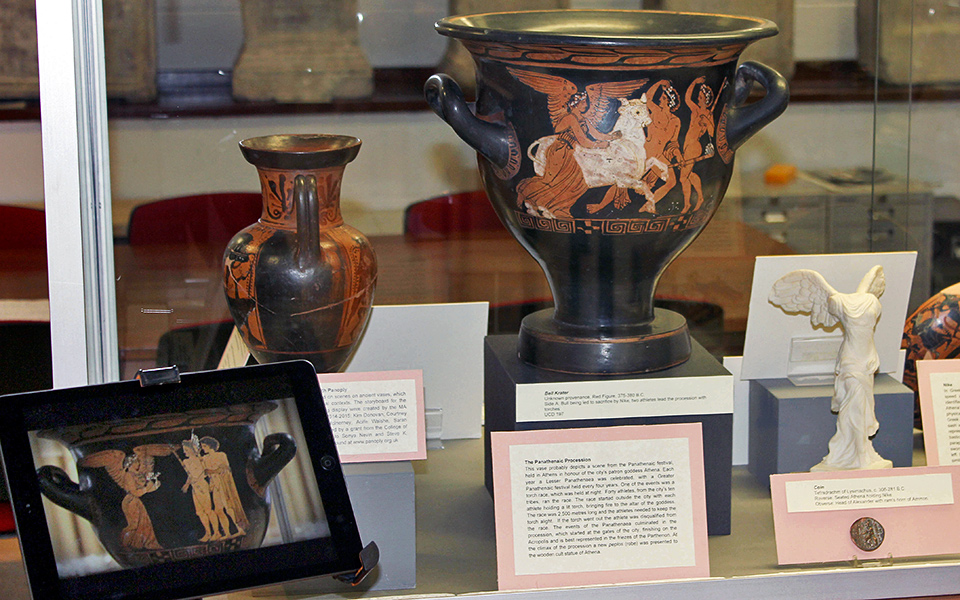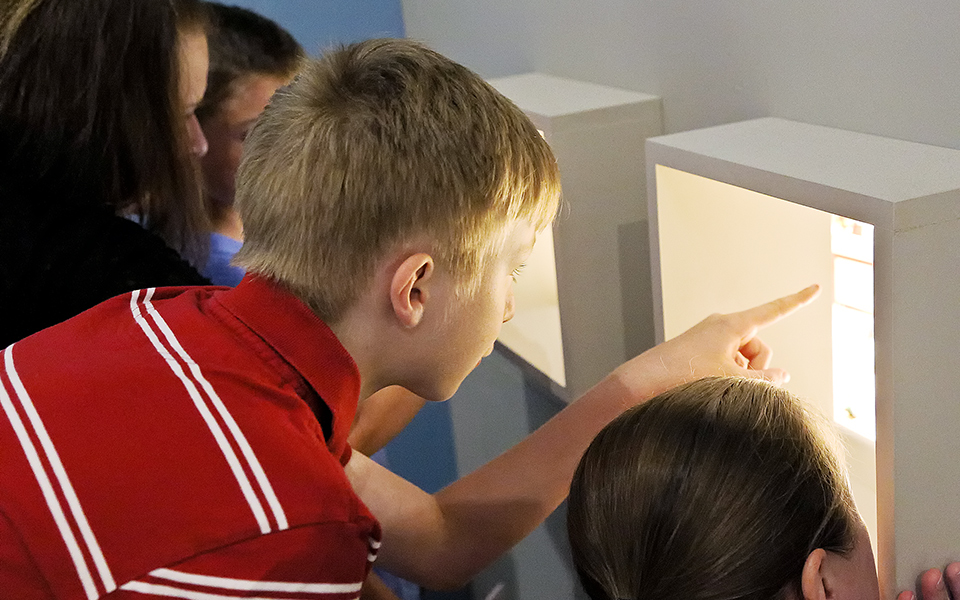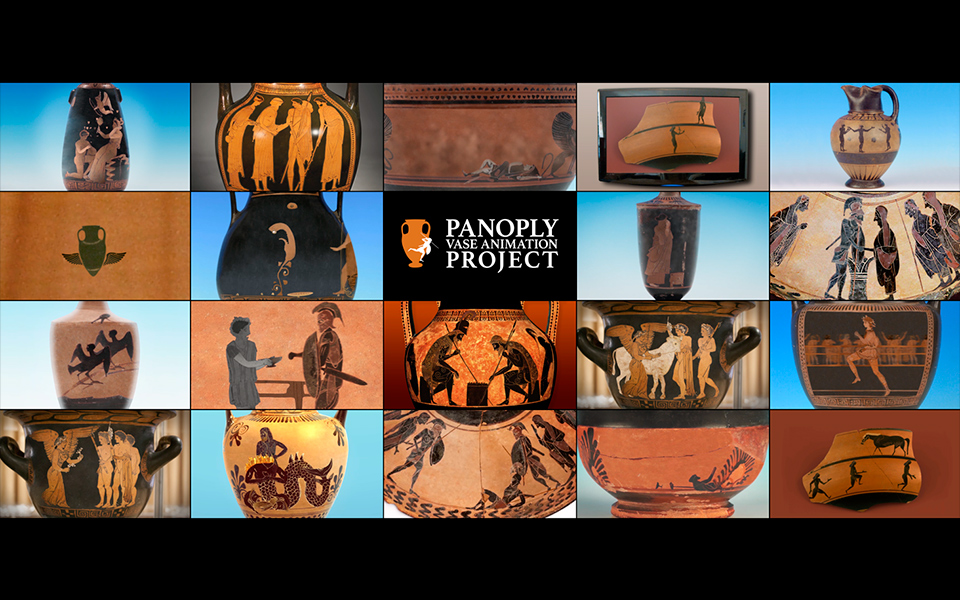There’s something magical about living in Athens and being constantly surrounded by so much ancient history. Whether you’re riding the bus into town or rushing through a metro station, glance up and the city’s ancient past is right there.
It’s human nature to gaze upon these fragments of our past and wonder what life must have been like back then, even more so in an age when we are bombarded with sounds and moving images. These static echoes of our past only make us wonder more about the moments our ancestors captured on the sides of vases, bowls and plates.
If you’re one of those people who’s ever had this thought, you’re in luck. The Panoply Vase Animation Project is an endeavor which takes real ancient Greek vases and animates the scenes on them, setting them to music and breathing new life into them in a way which fascinates children and delights adults. Through the videos, scenes from ancient Greece are slowly brought to life – figures on a vase begin to dance, hoplites amass for battle and reclining symposium participants sip from bowls of wine.
The project is run by Steve K. Simons, an animator and Sonya Nevin, a classical historian, combining Steve’s animation skills with Sonya’s expertise in ancient Greek culture.
It all began when they made a few simple animations for fun. These ended up being so popular that they decided to develop the project further to tell increase the understanding of ancient Greek culture. “We wanted to see some of the vase animations in museums, sitting beside the vases they are made from; it’s been a great pleasure to see that ambition realised.” says Steve.
The two founders of the project get to exchange ideas a lot, since not only are they co-collaborators, they are also a real-life couple and due to be married. “Steve specialises in animating the artefacts and has a great knack for depicting movement and character. I provide the detail on antiquity.” says Sonya.

Since they try to make the animations reflect the reality of Greek life at the time as closely as possible, it helps that Sonya is so familiar with the moments in time which they work with. She also writes supporting educational material to accompany the animations.
The project has been very positively received with over a quarter of a million views to date. Especially for educators, the animations act as an engaging tool to capture the attention of young students when teaching them about ancient Greece.
“Young people are more video focused, it’s positive for good quality history-videos to be available to communicate with people through that medium. Vase scenes are not always self-explanatory and, for those that don’t already love them, they are not always immediately fascinating. The animations help to address these barriers.” explains Steve.
The animations are digitally created using photo retouching techniques to create the characters and detail. “The style is reminiscent of stop-motion animation as we try to keep a cut-out, two-dimensional feel to the images to keep them anchored to the vase. Viewers may see similarities with the Greek theater puppet Karagiozi.” says Steve.
Rather than telling a story, the vases capture a moment from time and give it life. As Sonya explains, ancient vases themselves captured snapshots of life, indicating that there was a before and after to the scene on the vase. “We develop that idea by animating a ‘before’ or ‘after’. We’re also interested in conveying the idea that ancient art can inspire new art, as it always has.”
When choosing which vase to animate, they focus their attention on those with a large surface, such as amphoras, kraters and cups so that they have ample space to work with. “Our current project, for example, focuses on myth, so we selected vases that reflect either mythical figures or the situation in which myths might be told.” says Sonya.
INFO
Sonya’s book, Military Leaders and Sacred Space in Classical Greek Warfare: Temples, Sanctuaries and Conflict in Antiquity has been released and is on sale from December 1, 2016.
www.panoply.org.uk • Blog: http://panoplyclassicsandanimation.blogspot.co.uk/ • Facebook page: Panoply Vase Animation Project

The project has already been displayed at a number of museums and galleries in several countries, including the UK, Canada, Poland and Ireland. The Clash of the Dicers animation has been shown all across Switzerland and France as part of a moving exhibition curated by Professor Veronique Dasen.
“The National Museum of Poland in Warsaw exhibited Hoplites! Greeks at War as part of their temporary exhibition, Hoplites. On the Art of War of Ancient Greece. It was a tremendous exhibition of a range of arms and armour and vases featuring fighting and arming scenes. The vase animation added a lot to the exhibition by helping to demonstrate the context in which the artefacts would be used through a medium that was complementary.” says Steve.
The hoplites animation has in fact proven to be their most popular. This animation follows a soldier going through experiences of war from training to post-battle celebration. “This animation, like most of the others, also comes with downloadable activity resources. Ancient Greek culture is inspiring – we aim to help people to feel that inspiration and act on it.” says Sonya.
The team are currently working on an international project called: Our Mythical Childhood… The Reception of Classical Antiquity in Children and Young Adults’ Culture in Response to Regional and Global Challenges.
This project is funded by the European Research Council and led by Professor Katarzyna Marciniak of the University of Warsaw. A team of scholars from all over the world will be creating an open access database of children’s materials that feature mythical themes, collected from all over the world.
“Our contribution will be ‘Animating the Ancient World’, which involves creating five new vase animations, a documentary about the vases, and host of supporting information and learning resources to accompany them. We’ve already started working on a Heracles animation and we can already see that it will look amazing.”











